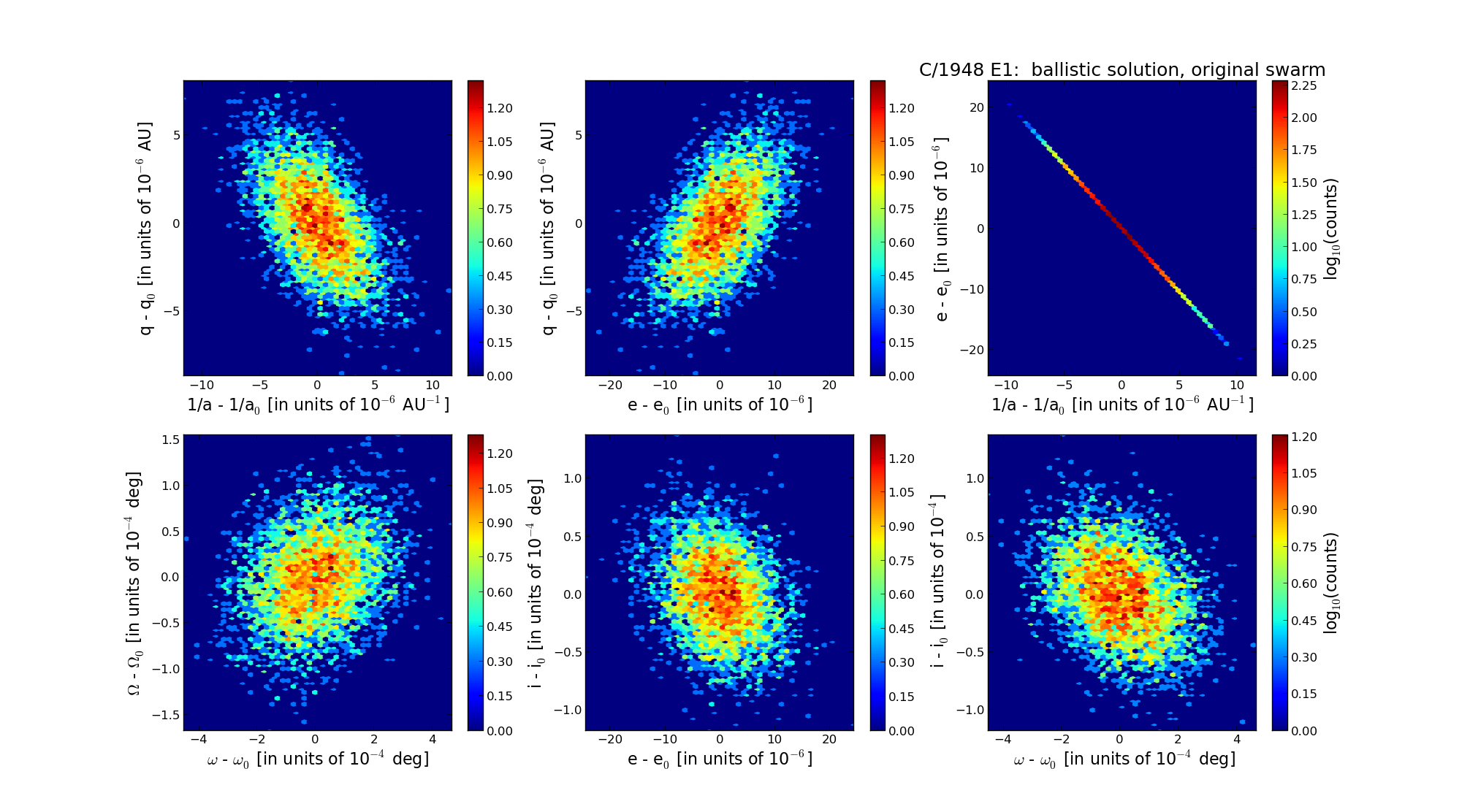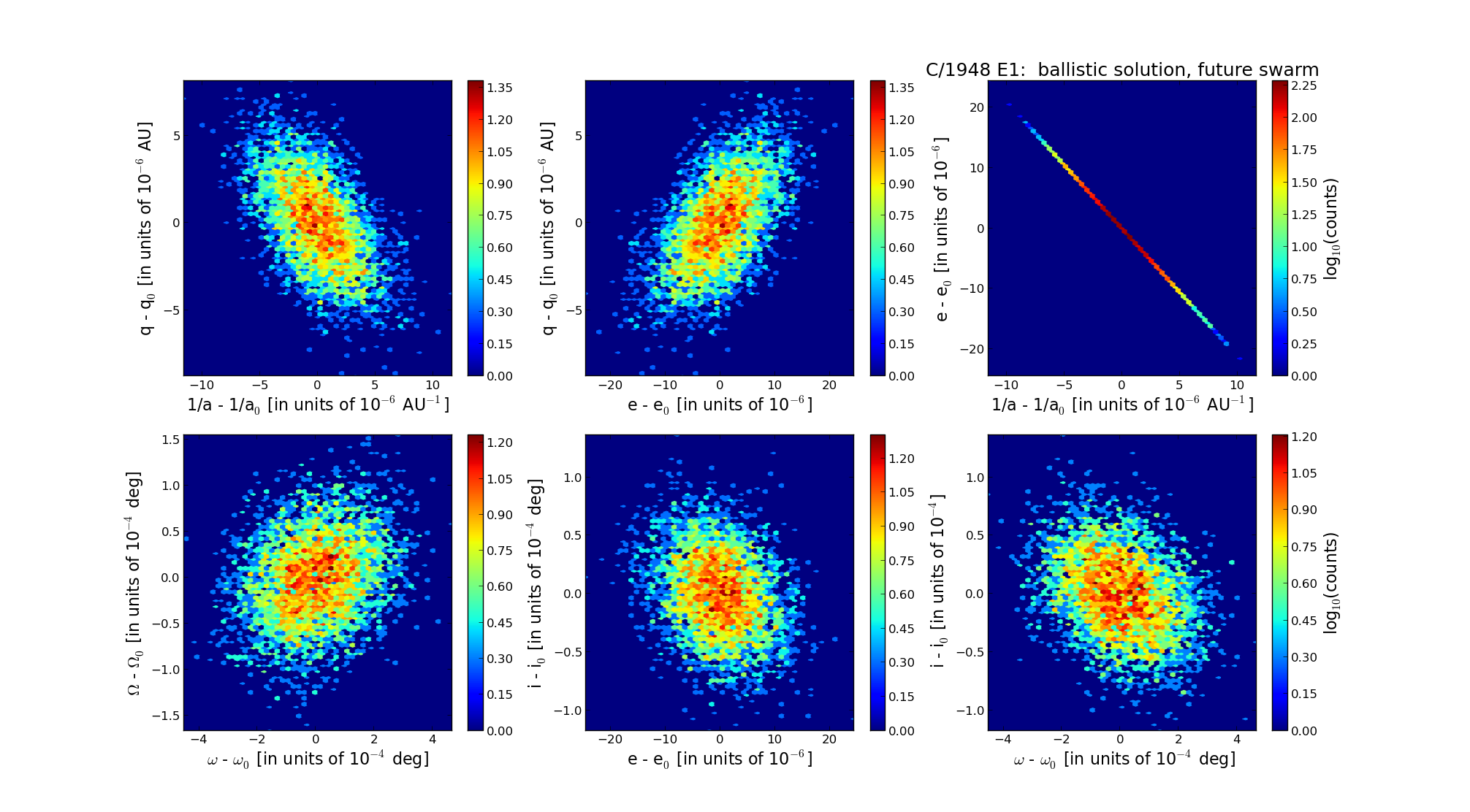| Solar System Dynamics & Planetology Group |
 |
C/1948 E1 Pajdušáková–Mrkos |  |
| Solar System Dynamics & Planetology Group |
 |
C/1948 E1 Pajdušáková–Mrkos |  |
| number of observations | 247 |
| number of residuals | 431 |
| data interval | 1948 Mar. 13 — 1950 Feb. 9 |
| rms [arcsec] | 1.48 |
| orbit quality class | 1a |
| Epoch (TT) | 19480509.0 | = JD 2432680.5 |
| time of perihelion passage (TT) | 19480516.612175 | ± 0.000281 |
| perihelion distance | 2.10705582 | ± 0.00000236 |
| eccentricity | 1.00077771 | ± 0.00000570 |
| argument of perihelion [deg] | 66.898096 | ± 0.000124 |
| longitude of the ascending node [deg] | 247.652645 | ± 0.000043 |
| inclination [deg] | 92.919469 | ± 0.000032 |
| inverse semimajor axis [10-6 au-1] | -369.10 | ± 2.70 |

| Epoch (TT) | 16471103 | |
| time of perihelion passage (TT) | 19480515.582710 | ± 0.000303 |
| perihelion distance | 2.09496271 | ± 0.00000240 |
| eccentricity | 0.99992197 | ± 0.00000575 |
| argument of perihelion [deg] | 67.168988 | ± 0.000127 |
| longitude of the ascending node [deg] | 247.706993 | ± 0.000044 |
| inclination [deg] | 92.925547 | ± 0.000034 |
| inverse semimajor axis [10-6 au-1] | 37.25 | ± 2.74 |

| Epoch (TT) | 22481112 | |
| time of perihelion passage (TT) | 19480516.423445 | ± 0.000277 |
| perihelion distance | 2.10546507 | ± 0.00000244 |
| eccentricity | 0.99992587 | ± 0.00000577 |
| argument of perihelion [deg] | 66.831432 | ± 0.000127 |
| longitude of the ascending node [deg] | 247.667975 | ± 0.000044 |
| inclination [deg] | 92.893283 | ± 0.000033 |
| inverse semimajor axis [10-6 au-1] | 35.21 | ± 2.74 |